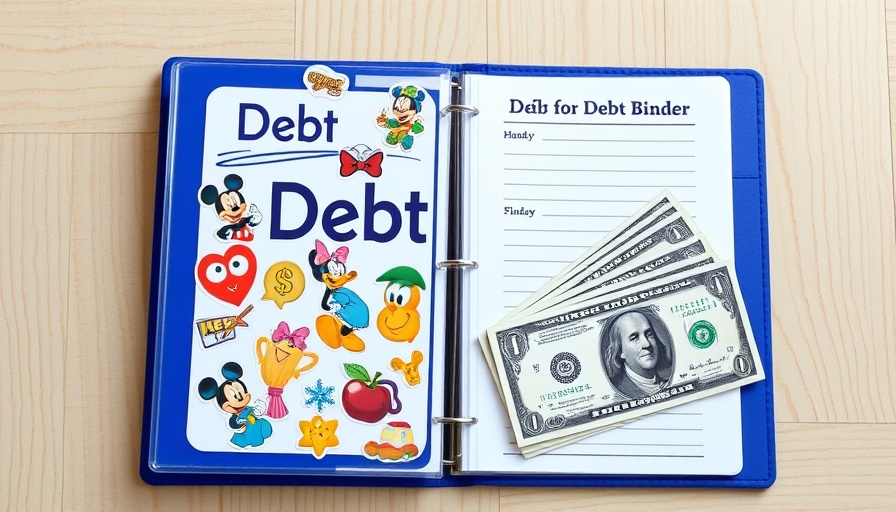
Understanding Debt Binders: A Practical Financial Tool
In the quest for financial stability, managing debt is often one of the biggest challenges. Budgeting strategies like the debt binder, as highlighted by the video DEBT Binder Day | Paying off debt one challenge at a time, provide an approachable way to tackle debt systematically. This method promotes savings and encourages accountable spending, making it particularly valuable for young workers in the UK who are eager to establish a strong financial foundation.
In DEBT Binder Day | Paying off debt one challenge at a time, the discussion highlights practical budgeting strategies for debt payoff, prompting a deeper look into the merits of using a debt binder.
How a Debt Binder Works
A debt binder is a physical or digital system where individuals can track their savings and distributions toward various debt obligations. Think of it as a fiscal roadmap. In the video, the presenter utilizes a 'Snow White' themed binder that organizes funds intended for different savings challenges. Each challenge represents a strategy to make micro-contributions toward larger financial goals, such as debt repayments. It’s like a fun game that also serves the serious purpose of guiding users through their debt repayment journey while fostering good financial habits.
The Benefits of Savings Challenges
One of the appealing aspects of employing a debt binder is the integration of savings challenges. For instance, the video illustrates how small contributions can accumulate significantly over time, demonstrating the principle of compound savings in action. As fun and engaging as these challenges are, they also have practical utility—by allocating as little as $5 to various challenges, individuals can bypass the daunting notion of large lump sum payments, making debt management feel more achievable.
Building Financial Discipline Through Tracking
Another significant advantage of maintaining a debt binder is the discipline it instills. Drawing from the video, the act of physically writing down contributions and coloring in completed challenges serves as a tangible reminder of progress. This practice reinforces accountability and motivates continued efforts, which is incredibly crucial for those looking to create a robust financial future.
Debt Management in Relation to Broader Financial Strategies
Understanding debt management is just as essential as knowing how to grow wealth. Young professionals are often conflicted between current commitments and future savings. Utilizing a debt binder provides a balanced approach, where putting extra money aside translates directly into debt reduction. This principle encourages viewers to establish not just savings plans but also strategic debt repayment methodologies—skills that vastly improve overall financial well-being.
Common Misconceptions About Debt Binders and Savings Challenges
Many people might dismiss strategies like a debt binder as overly simplistic or not applicable to their situation. However, as shown in Budget with Mama Bear’s video, these strategies can be customized and scaled according to individual needs. It's essential to realize that every little contribution counts; what feels like a minor effort can combine remarkably to yield substantial financial relief in challenging debt landscapes.
Final Thoughts: Making Baby Steps Towards Financial Success
For the workforce in their 20s to 40s, budgeting strategies like a debt binder serve to ease the transition into more intricate financial frameworks, where investing and wealth-building become accessible. Young workers in the UK should see this tool as an opportunity to demystify their financial situations—by starting small, they create a solid foundation for their financial future. Now is the time to take proactive steps; a little effort every month can lead to a less daunting financial landscape.
It's incredible to imagine how two hundred dollars could grow—consider what’s in your own wallet! Would you start a savings challenge today? A well-organized debt binder might just be the friend you didn’t know you needed in your journey to financial freedom.
 Add Row
Add Row  Add
Add 




 Add Row
Add Row  Add
Add 

Write A Comment